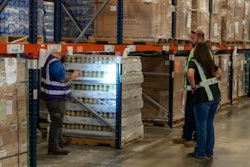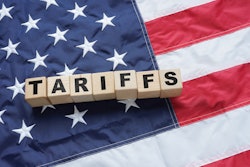
Deal activity in the transportation and logistics (T&L) sector remained consistent in early 2025 as compared to the same period in 2024, according to data released by PwC.
In the United States, deal volume was muted as companies navigated sustained macroeconomic pressure, policy shifts and geopolitical volatility. T&L leaders are prioritizing strategic alignment over volume with subsectors like airfreight, logistics, and marine ports and terminals attracting the most interest.
“The transportation and logistics sector is acutely sensitive to tariff shifts, which often stall deal activity amid uncertainty — yet for discerning investors, this volatility can present rare opportunities to unlock long-term value,” says Darach Chapman, U.S. transportation and logistics deals leader.
Key takeaways:
· The sector is contending with geopolitical conflicts in the Red Sea, Ukraine, Gaza and Pakistan, which disrupt global trade flows.
· Hopes for U.S. interest rate cuts in early 2025 have faded. But the most significant shock was the U.S. administration’s sweeping tariff overhaul, extending far beyond the end of the de minimis exemption, with steep new duties on key import categories.
· While deals activity held steady through late 2024, it has slowed markedly in 2025 as industry players take a wait-and-see approach.
· Investor appetite for T&L infrastructure remains strong. Recent transactions involving maritime ports and airport assets highlight the enduring strategic value of scalable, policy-aligned infrastructure.
· Carriers are focusing their portfolios on specialized growth areas with strong margins and high barriers to entry such as cold chain services, healthcare and pharmaceutical logistics, reverse logistics, white glove delivery, and spare parts logistics.
· The 3PL and supply chain technology segments continue to attract interest from both financial sponsors and strategic buyers. Fragmentation within these segments presents consolidation opportunities, with firms leveraging M&A to scale and modernize operations.
· Recovery in trucking rates and volumes following the freight recession may help bridge valuation gaps between buyers and sellers in the second half of 2025. However, continued softness in ocean freight and pricing volatility in air cargo could constrain activity.
· Dealmakers are navigating a volatile environment with new tariff frameworks, paused reciprocal tariffs and evolving foreign investment rules. These evolving policies affect freight flows and valuation assumptions, particularly for ocean, air, intermodal and cross-border 3PL providers.
· If the Federal Reserve begins easing interest rates in the second half of 2025, its impact on the cost of capital could unlock further dealmaking, especially for private equity (PE) and leveraged buyers.
· Fragmented transportation and supply chain technology providers continue to attract attention from both financial sponsors and strategic buyers. As companies seek scalable solutions to modernize operations, logistics tech is emerging as a key area for investment and consolidation.
· Multi-modal players are expected to continue refining their service offerings to enhance their operational focus, unlock shareholder value, and manage portfolio risk.














![Pros To Know 2026 [color]](https://img.sdcexec.com/mindful/acbm/workspaces/default/uploads/2025/08/prostoknow-2026-color.mduFvhpgMk.png?ar=16%3A9&auto=format%2Ccompress&bg=fff&fill-color=fff&fit=fill&h=135&q=70&w=240)




